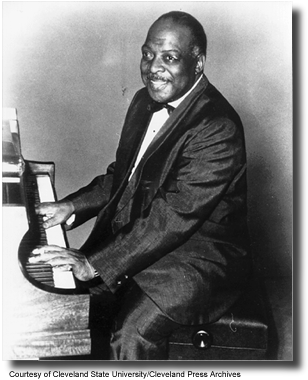This book was written to help listeners increase their appreciation and enjoyment of jazz. The book and its accompanying Jazz Styles Demonstration CD give readers a peek into how jazz musicians put together performances and how their methods have differed from style to style. There is a discussion of how jazz originated, and the Jazz Classics CDs provide examples of the roots, the earliest recordings, and many major styles that developed later. Styles are described in ways that should help the reader get more out of listening to them. The music is presented in roughly chronological order, and the historically minded reader can use that order to examine major currents in the history of jazz. This particular book was intended, however, more as a description of the styles themselves rather than a decade-by-decade chronicle of the changing jazz scene. This text was designed as a smorgasbord of information so readers would have a flexible reference source.
 Count Basie
Count Basie
Because of space limitations, this book deals almost exclusively with American instrumental jazz, and coverage is neither comprehensive nor encyclopedic. For more comprehensive coverage, see (a) “Supplementary Reading” (pages 406-411), and (b) the books that are footnoted throughout the text. With space limitations in mind, however, the book was designed to devote proportionally more pages to music that developed since 1940. This is because, since the first jazz recordings were not made until 1917, about six-eighths of recorded jazz history has occurred since 1940, and this is music that occupies the lion’s share of available recording, nightclub, and concert fare encountered by today’s readers. Another reason for this allocation of space is that much of the music discussed here in reference to the 1960s–John Coltrane and Chick Corea, for instance–provided foundations for the dominant styles of the 1970s, 80s, and 90s, as that which is discussed here regarding the 1930s–such as Count Basie and Lester Young, for instance–provided foundations for the dominant styles of the 1940s and 50s.
No technical knowledge of music is required to understand the contents of this book, and the text’s vocabulary has proven to be comprehensible for high school students.
Though the book was originally conceived for nonmusicians, previous editions have also proven attractive to musicians because of (a) the “For Musicians” appendix (pages 415-431) that provides notations illustrating basic musical principles (chord changes, modes, comping, walking bass, ride rhythms, etc.) and because (b) the book is especially concerned with detailing the ways styles sound and how they can be differentiated in terms of preferred instruments, tone quality, melody, harmony, rhythm, and approaches to improvisation. Supplements of musical notation are referenced in footnotes throughout the text as well as in the sections devoted to “Technical References” (pages 410-411) and “Sources for Notated Jazz Solos” (pages 412-414).